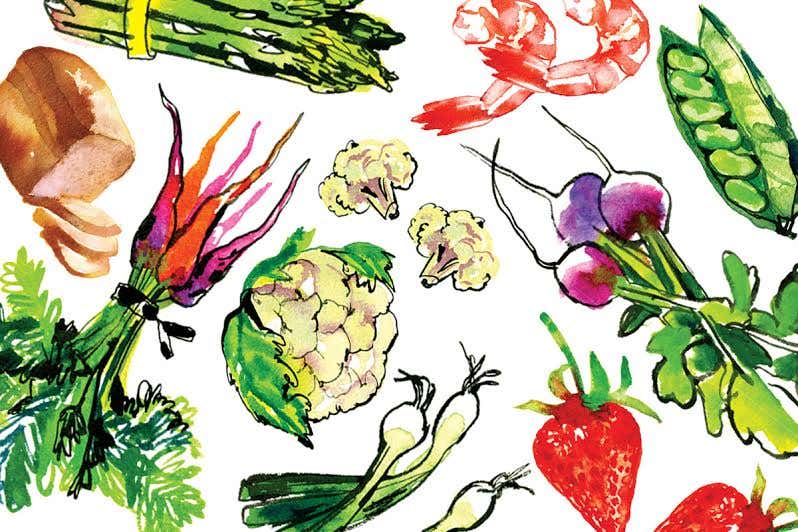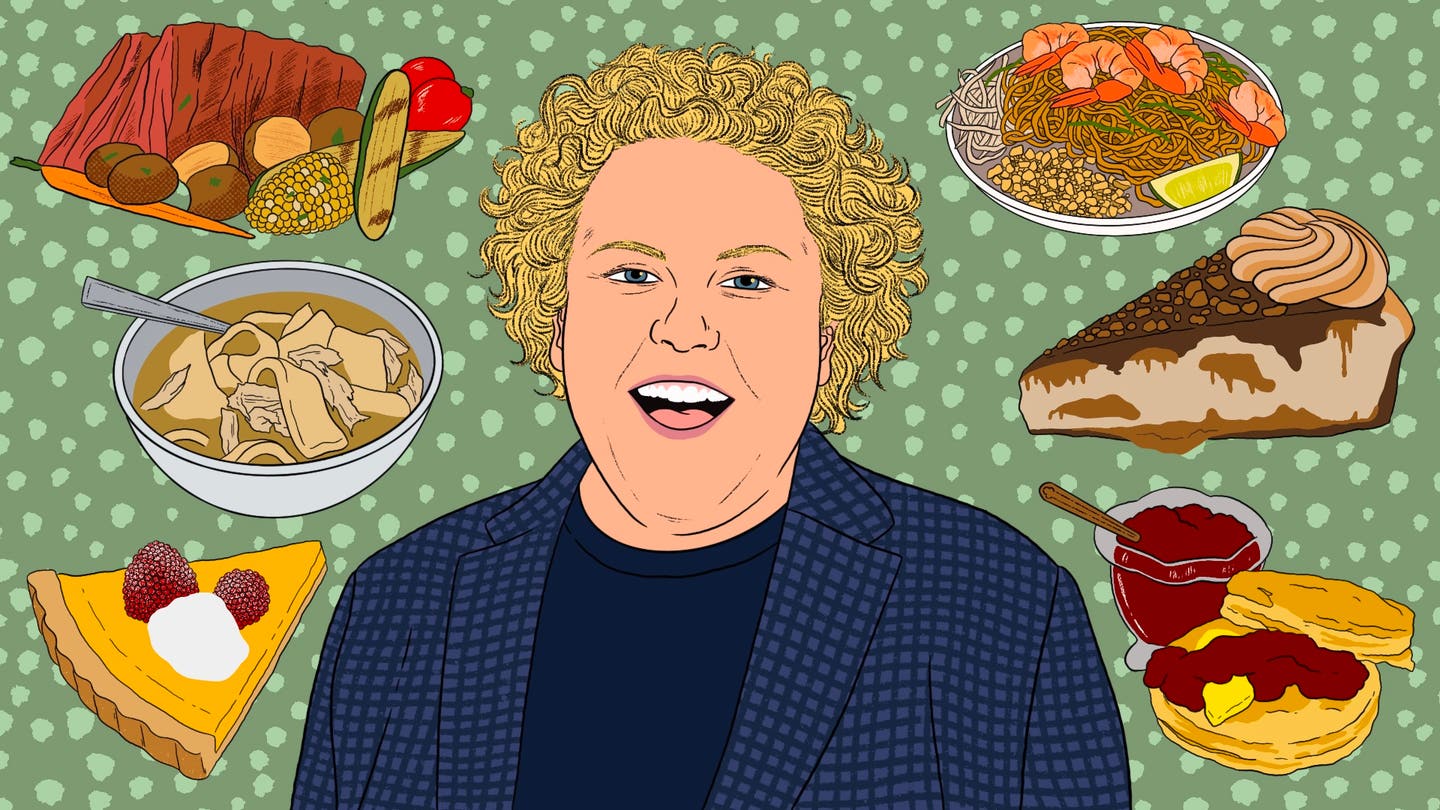
Peekskill’s Dairy King
The time was ripe for Jonathan White to age what could be America’s best cheese.
Jonathan White used to be an automation engineer. He designed biomedical instruments and "intangible, obscure things," he says, "stuff too hard to describe." He spent most days tucked away in his home office in Peekskill, New York, in front of a computer.
Now, White, who's 39, makes cheese, and he can be found darting between an aging room and a giant refrigerator, and, on any given day, swapping pasteurizing tips with a goat's-milk cheese producer in Indiana, chatting on-line (yes, he still logs on) with a stranger about why Velveeta looks like Velveeta (because it is cooked cheese food, not really cheese at all), or speaking at the Smithsonian about the coevolution of cheese and culture. His calendar revolves around cheese society get-togethers, festivals, demonstrations, and tastings. He even confesses to dairyhopping on vacation. That's what happens when you produce some of America's best artisanal cheese.
Two years ago, White opened Egg Farm Dairy, which, despite the agrarian image the name evokes, sits alongside a hair salon, a fitness center, and a tile store in a strip mall in Peekskill. From the beginning, he was shipping to such blue-chip Manhattan customers as Restaurant Daniel, Chanterelle, and Zabar's; annual sales hover around $1 million; and his cheeses—and butters—can now be found across the country. Seems he was born to do cheese.
It didn't look that way in 1979, the first time White made (well, tried to make) cheese. He was living in Hoboken, New Jersey, his hometown. With a soft spot for secondhand bookstores and an innate curiosity about food—and food production—White had amassed quite a collection of reading material along the lines of Super-Easy Step-by-Step Cheesemaking. Easy or not, that initial cheese endeavor was less than promising. In hindsight, he says the problem was not the recipe but the milk: He used your basic store-bought. The cheese, regardless, was a disaster.
So the books were shelved. White got married (to a dancer, Nina Stein), had his first child (Paula), and moved to New York's bucolic Putnam Valley, about 50 miles north of Manhattan. Although still working as an engineer, he was now surrounded by farms—like that of composer-conductor David Amram, who had, among other things, a few goats. In 1988, Amram offered White some goat's milk, and despite visions of his previous curdling calamity, White looked at it as a challenge—and dusted off the books.
This time, White recalls, he made "the sort of cheese farmers' wives made when they had milk to spare"—in other words, it was a modest success. He kept testing various methods of aging, however, and before long had something "gray-green and wild-looking." He liked it, and he named it American Patina.
The following spring, Amram upped the ante, giving his neighbor a daily dose of cow's milk as well. So White started making cream, skim milk, and cream cheese—more than he could give away. He thought briefly about advancing to butter, but that seemed like too much work. The idea of making buttermilk, however, intrigued him.
Most buttermilk found in the dairy case nowadays is made by adding a culture to pasteurized skim milk. As a tribute to tradition-loving food writers Edna Lewis and Marion Cunningham, both of whom lament the disappearance of the real thing, White set out to make buttermilk the old-fashioned way. He skimmed the milk, pasteurized the cream, let it ripen, and churned it, four pounds at a time, in (the one contemporary touch) his Cuisinart. After skimming off the yellow globs of fat, he had thick, tangy buttermilk—and it was good, but it was the fat, once rinsed and whipped, that was extraordinary. He had made butter after all, and it was well worth the trouble.
Cheese was still just an after-work afterthought when the White family (Tobias and Jacob were born in 1991 and 1992, respectively) moved to Yorktown, which is nine miles from Peekskill. Coincidentally (or maybe not so), their house had been part of a 90-acre dairy and egg farm in the 19th century. Once settled, White continued experimenting, and he was soon crafting colorful aged cheeses—some marbleized with as many as 20 different molds—and a milder white cheese, made with a penicillium extract borrowed from a rind of brie. He started feeding both types to his friends.
Re-enter David Amram: In the spring of 1993, White supplied cheeses for Amram's daughter's bat mitzvah—which was crawling with Manhattan foodies. A little networking eventually led to an introduction to Steve Jenkins, who was then the cheese buyer for Dean & DeLuca. Jenkins told White to abandon his pretty white cheese—too common—and stick to that funky, colorful American Patina. He also told White about the American Cheese Society, a nonprofit organization based in San Francisco that promotes farmstead and specialty cheeses.
White joined the group and, that August, drove to its annual cheese competition, held that year in Shelburne, Vermont. He had a trunk full of American Patina and—because the society encourages members to bring along any "experiments"—White packed a small cooler with butter. The cheese was not a hit; the butter, however, was slathered, to great acclaim, on scones at the competition breakfast. White began thinking about the dairy business.
One month later, at the state dairy competition hosted by Charlie Palmer, owner of New York City's Aureole and co-owner of the Lenox Room and Alva, everything clicked. After one smear, Palmer asked White about ordering butter for his restaurants. Although White had a business proposal burning a hole in his briefcase, he insisted that he was an engineer, and that buttermaking was just a hobby. When Palmer proposed turning the hobby into a business, White gave in. He pulled out his proposal, and after a half an hour, they were well on their way to being partners.
In October, White quit his engineering job and started pasteurizing, aging, churning, and molding professionally. To begin with, he lined up a handful of Hudson Valley milk and cream suppliers, and, with the help of six other primary investors (including his mother and best friends), he secured about $100,000 in start-up funds. He then polished up a rickety but working $4,000, 1952-vintage vat pasteurizer; spent another $4,000 to install it; designed and constructed his own churn; fixed up 1,800 square feet of space in a shopping center in the Charles Point area of Peekskill; moved in; and hired two full-time employees.
Egg Farm Dairy opened on April 15, 1994, and is named for White's house, which, he claims, is haunted by the ghosts of cheese-makers past. In a matter of days, White was pitching his high-fat, high-flavor butter to 20 top New York restaurants, handpicked by Palmer. All but one signed up. By this time, he was making not only buttermilk, but clabber cream (the American creme fraiche) and, because his daughter asked him to, chocolate butter (for making pastries and sauces and simply spreading on bread).
"We decided in the beginning to do very simple foods," says White. "In a world where people do too much to things, we try to do as little as possible."
Today, White's product line, which Palmer is actively involved in developing, includes nine from-scratch cow's-milk cheeses. Five are molded into wheels and pyramids: amram (named for the man who helped start it all); amawalk, hudson, and muscoot (named for local rivers); and peekskill. Then there are ricotta, mascarpone, buttermilk cheese, and what White calls quarg (most Americans know it as quark), a low-fat, yogurtlike cheese. White also imports and ages delphina and amelia from Portugal and estancia madura from Uruguay. On the American front, he buys and ages a Vermont cheddar and a strong, limburger-like Midwestern cheese, hollis. Ice cream and buttermilk sherbet are in development, as is American Patina: White, at press time, was in search of goat's milk and sheep's milk suppliers.
The dairy now employs nine people, including two full-time cheesemakers, Robert Gordon and Kevin McCarthy, and a full-time intern from the Culinary Institute of America in nearby Hyde Park. Space has expanded to 5,600 square feet, not to mention an additional production facility rented specifically for making butter (up to 10 tons a week). White also runs a mini-market out of his plant on Fridays and Saturdays—selling his own products and other select foodstuffs; teaches a class on dairy foods at CIA; and travels to promote both his own goods and cheese in general. (White himself is a model of cheese-eating moderation: Between professional samples and recreational bites, he averages—he says—a mere 3 ounces of cheese a day.)
"This is great," White says, "but with three kids, I don't want to be CEO. I just want to make cheese."
Keep Reading
Continue to Next Story










